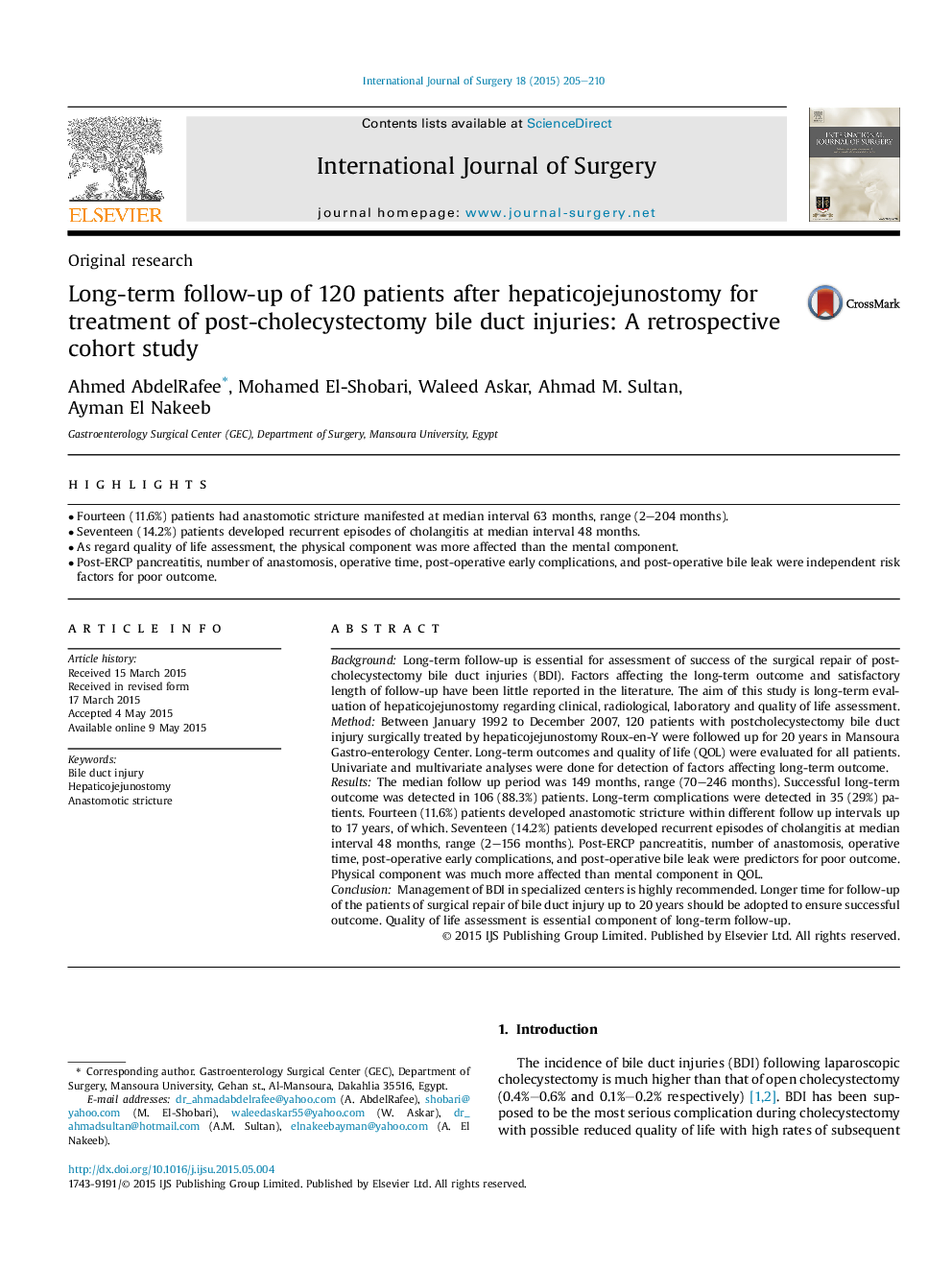| کد مقاله | کد نشریه | سال انتشار | مقاله انگلیسی | نسخه تمام متن |
|---|---|---|---|---|
| 4285849 | 1611975 | 2015 | 6 صفحه PDF | دانلود رایگان |

• Fourteen (11.6%) patients had anastomotic stricture manifested at median interval 63 months, range (2–204 months).
• Seventeen (14.2%) patients developed recurrent episodes of cholangitis at median interval 48 months.
• As regard quality of life assessment, the physical component was more affected than the mental component.
• Post-ERCP pancreatitis, number of anastomosis, operative time, post-operative early complications, and post-operative bile leak were independent risk factors for poor outcome.
BackgroundLong-term follow-up is essential for assessment of success of the surgical repair of post-cholecystectomy bile duct injuries (BDI). Factors affecting the long-term outcome and satisfactory length of follow-up have been little reported in the literature. The aim of this study is long-term evaluation of hepaticojejunostomy regarding clinical, radiological, laboratory and quality of life assessment.MethodBetween January 1992 to December 2007, 120 patients with postcholecystectomy bile duct injury surgically treated by hepaticojejunostomy Roux-en-Y were followed up for 20 years in Mansoura Gastro-enterology Center. Long-term outcomes and quality of life (QOL) were evaluated for all patients. Univariate and multivariate analyses were done for detection of factors affecting long-term outcome.ResultsThe median follow up period was 149 months, range (70–246 months). Successful long-term outcome was detected in 106 (88.3%) patients. Long-term complications were detected in 35 (29%) patients. Fourteen (11.6%) patients developed anastomotic stricture within different follow up intervals up to 17 years, of which. Seventeen (14.2%) patients developed recurrent episodes of cholangitis at median interval 48 months, range (2–156 months). Post-ERCP pancreatitis, number of anastomosis, operative time, post-operative early complications, and post-operative bile leak were predictors for poor outcome. Physical component was much more affected than mental component in QOL.ConclusionManagement of BDI in specialized centers is highly recommended. Longer time for follow-up of the patients of surgical repair of bile duct injury up to 20 years should be adopted to ensure successful outcome. Quality of life assessment is essential component of long-term follow-up.
Journal: International Journal of Surgery - Volume 18, June 2015, Pages 205–210